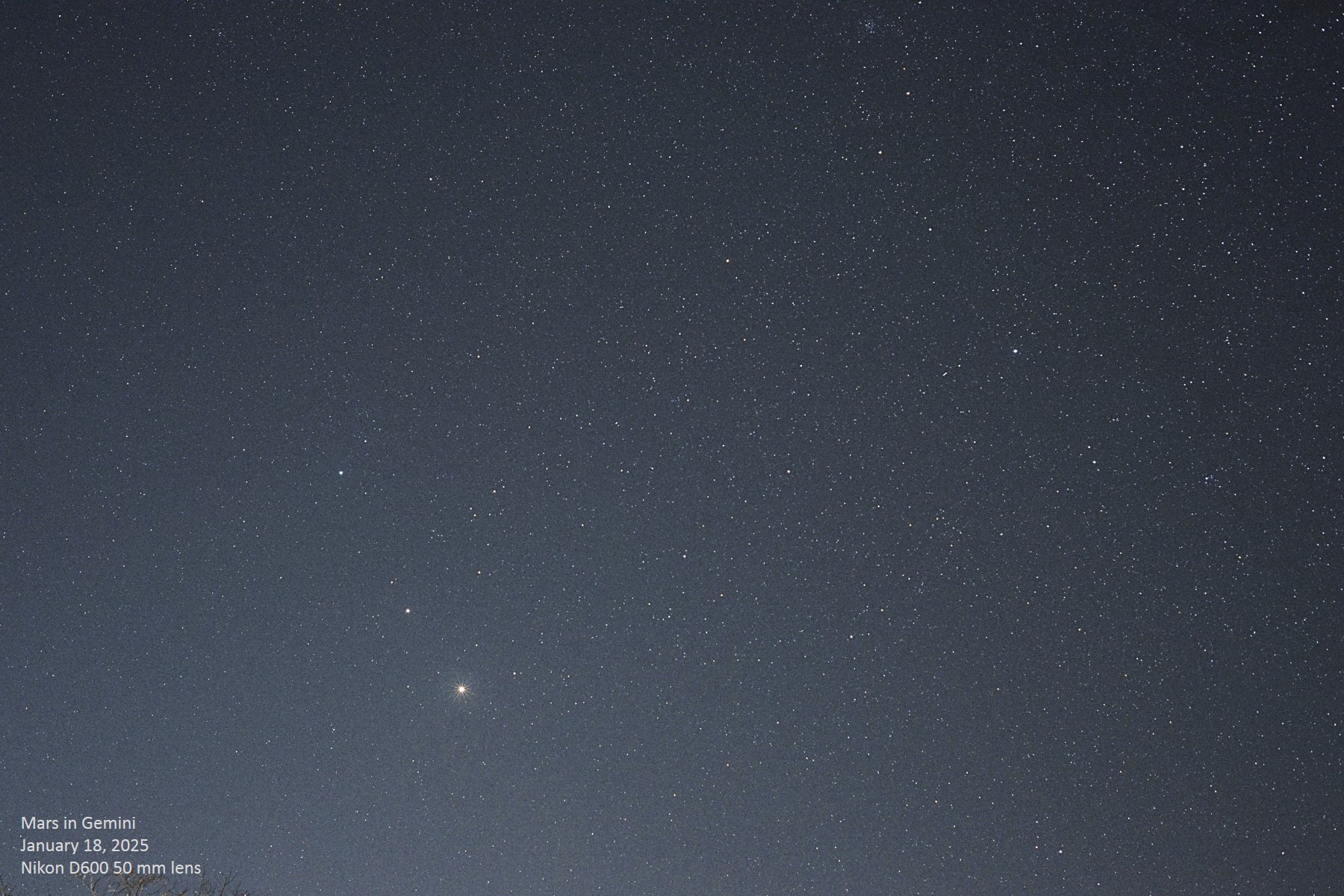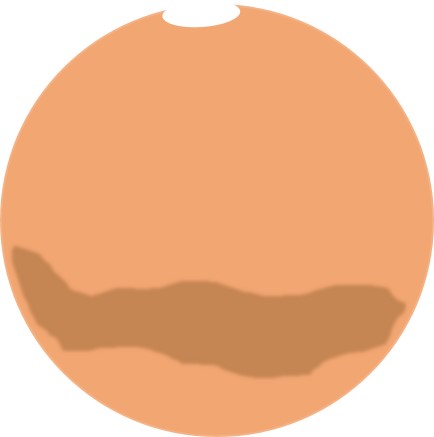
This image was recorded with a Nikon D600 and my 1980's vintage Nikon Series E 50mm pancake lens, which is very sharp despite being light weight. The exposure was 13" so of course I had to compensate by using a tracking mount.
Even though Mars is relatively small this opposition, the views I've with my C8 SCT have been good: the two longitudes that I have observed presented Mare Acidalim and Mare Sirenum, so unfortunately I have not had a view of Syrtis Major yet. The north polar cap has been nicely visible on each occasion, however.
The following evening, before midnight on Jan 19 - 20, I observed Mars again with a good view of the polar cap and the region between Mare Acidalium and Syrtis Major ~ the southern area showed dark markings of Sinus Meridiani and Margaritifer:

The power point sketch shows the only two features I was able to see: the polar cap and dark areas to the south.
Mars is only two days past opposition, so still almost at its peak brightness and size for the season. Yesterday, Mars' position was such that it made a straight line with Castor and Pollux, so beginning now it will create an ever-changing triangle with those two stars. On this night, Mars is at magnitude -1.35 and has a diameter of 14.47" arcseconds, which is barely 35% of its maximum size in 2003 or 2050. Unannotated image.